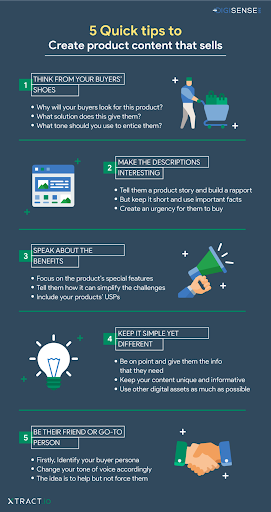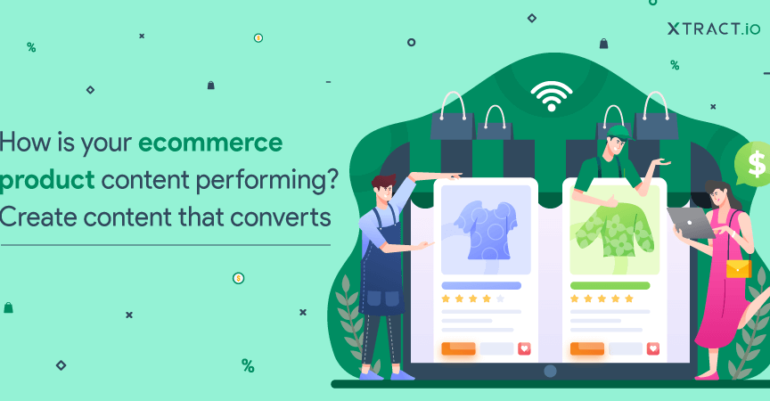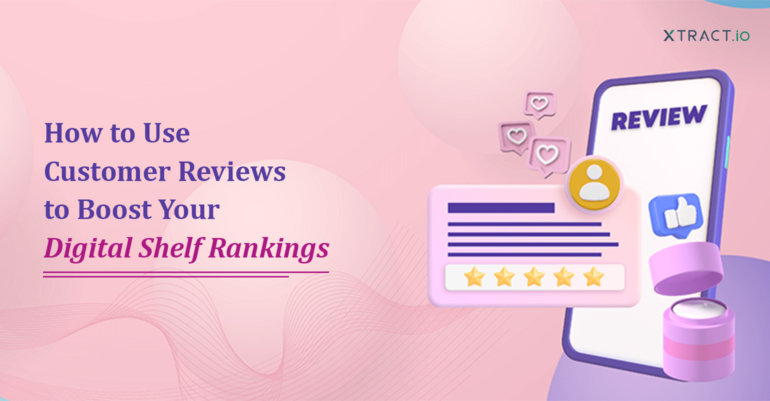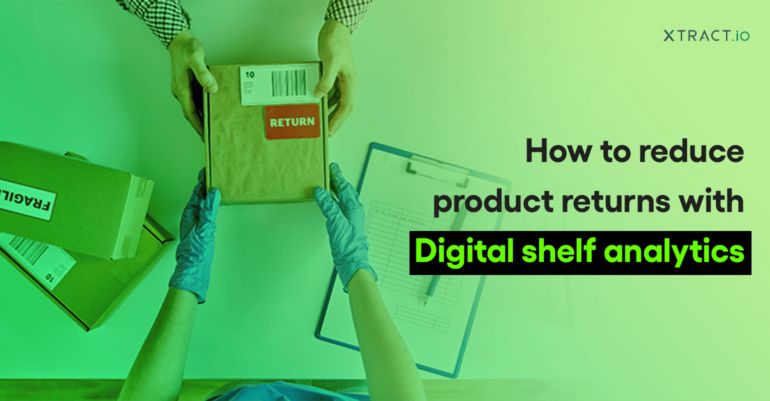Imagine customers walk into your store, and you have to convince them to buy your products without speaking or using words. Will it be easy for you to close the sale? Do you think they will understand the product content correctly? Despite having the most significant benefits of touching and seeing the product, the probability of you converting them is very low.
On ecommerce sites, brands must visually attract and persuade online shoppers to purchase their products, without any direct sales pitch. Digital shelf analytics provides the data and insights brands need to refine their product pages and drive conversion, much like improving an in-store display to grab customer attention.
Product pages lacking key details and attributes can result in missed sales. Digital shelf analytics highlights content gaps so brands can add missing information to increase conversions.
Why is product content auditing one of the crucial cards in ecommerce sales?
According to a content analytics report by eMarketer, 83% of respondents agree that product images influence them to buy, and 82% say that product descriptions play a crucial role in their buying decisions. This research stands proof to convey the importance of product information and rich product content. With ecommerce selling, your only chance is to use product content to persuade your customers’ buying decisions.
Speaking about conversion, you know that every content on the product page is crucial in pushing customers down the sales funnel. To influence buyers, you need rich product content. Hence, solid and enticing descriptions are essential, and you know that descriptions don’t stop with a few lines of product features.
What is rich product content?
Rich product content is more of the visual assets and interesting descriptions you add to make the product look appealing on the digital shelf. According to research by Practical Ecommerce, product pages with videos saw a boost in conversion rates from 12% to a whopping 115%. Videos also reduced the returns rate by 25%, according to a study by Internet Retailer.
Rich product content could be product videos, user manuals, detailed descriptions, 360-degree product views, customer images, etc. Making such sources available for your audience gives them what they miss in online shopping – the product’s visual, touch, and feel and automatically drives them to buy from you.
However, the opposite, such as wrong information, boring content, lack of visuals, etc., could result in cart abandonment, returns, and negative reviews. A persuasive copy that goes beyond a simple description of features turns a casual visitor into a potential buyer. If your product content is strong enough to do that and replace sales assistants (in retail stores), you can pat yourself for doing a good job.
For example, to check if your product content is on point, let us look into an Amazon product page.
1. Product title
In this era of instant gratification, people expect the details to be readily available. The easier it is for them to find it on your product page, the more repeated visits you get. So, it’s crucial to communicate the product details in a more scannable structure. Also, your first step in pushing your customers down the funnel begins with the title description of the products.
In the case of a desk lamp sold by one of Amazon’s sellers, the title uses essential words such as desk lamp, table lamp, and office lamp, though it is plain to see. Buyers use these search words while looking for items on ecommerce marketplaces and other digital shelves.
Use relevant key phrases in the title very close to the beginning to help your customers identify the items quickly, boost your search visibility, and rank better.
2. Product features
Coming down to the descriptive part, the length for most products on Amazon marketplace is 255 characters for each bullet point. It is almost like a mini para for you to provide maximum details and catch the buyers’ attention.
Using descriptive words like eye-caring, dimmable, etc, tells the features and conveys why they should choose this item over the others. Breaking it down even further, details like 12W, touch control, 5 lighting modes, 7 brightness levels, and a USB charging port reduce the electricity bill by 75%, helping buyers to confirm that yours is the ideal product they are searching for.
3. Short description
The short description includes quick, easy-to-read primary information that people search for color, style, light source type, power source, shade material, etc.
This basic or essential product content is mandatory to rank on the digital shelf. This gives them an idea about the product and lets them decide whether to read further, and you mustn’t miss this part while uploading your product details.
4. Product video & pictures
This is where the rich product content jumps in. According to Aberdeen, it is interesting to discover that businesses who used videos on their sites witnessed nearly half their usual gain. Also, with videos and pictures, your customers can imagine how well the product fulfills their requirements.
Remember that the requirements for images and videos could differ for different ecommerce marketplaces. You should add as many pictures as possible in the best quality available.
Creating content that converts
If you are a bit new to creating product content and if everything feels overwhelming, here’s a short explanation on how to create product content that sells.

We’ve now seen product content, rich product content, why it is essential, an example to check your content on the product page, and how to create content that converts. Let’s now look at how great ecommerce sales are directly proportional to great product content.
1. Reduces your return rate
A penny saved is a penny earned goes true in this. In research conducted by Contentfactory1, it was found that 30% of buyers abandoned their carts because they did not find enough information about the product. Good product content builds confidence in the brand and reduces the return rate.
2. Increases repeated visits and sales
Selling not just once but making them your frequent buyers is the real success. More than half, that is, 86% of people, voted that they would buy from the same store if what they received was the same as what was described in the product description, according to a study by Deloitte.
3. Increases new customer base
Good content does more than just pass a piece of information. 81% of the people who participated in a Hubspot research say that they choose a brand or a product based on the recommendations from their friends and families. When your consistent product content can repeatedly influence a buyer, the sale does not stop there.
That being said, how would you manage to post consistent, rich, accurate product content across all platforms? Here are a few tips for you to measure its performance.
Measuring your product content across all channels with these 4 simple tips
- Measuring product content using digital shelf analytics software helps you monitor performance and identify gaps within the content with almost no hassles. Also, health-checking the content and distributing it the same across all platforms.
- Set a standard for your product content and channel guidelines so you never compromise on brand experience. Yes, the channel-specific policies may vary. But the essentials are almost similar across all ecommerce selling sites.
- Optimize your product content for SEO with rich and high-ranking keywords using a digital shelf analytics platform. Infuse search terms in the title and other essential description spots to increase product visibility.
- Content has a direct impact on your click-throughs, sales, and conversions. Monitor your product content with regular content audits and a channel compliance dashboard to empower the low-performing ones with real-time conversion optimization.
Alternatively, you can deploy an ecommerce product content auditing and digital shelf analytics software like DigiSense360. It maintains a standard in your content by doing regular audits, improves content based on varied guidelines for varied channels with custom scoreboards, points out content that needs improvement and other missing attributes, identifies top-performing keywords in titles and descriptions, and more. You can opt to improve your product content and grow sales now with DigiSense360.







